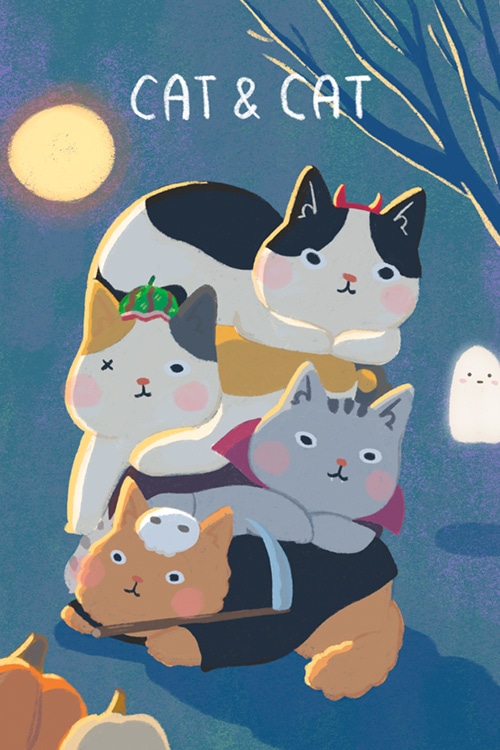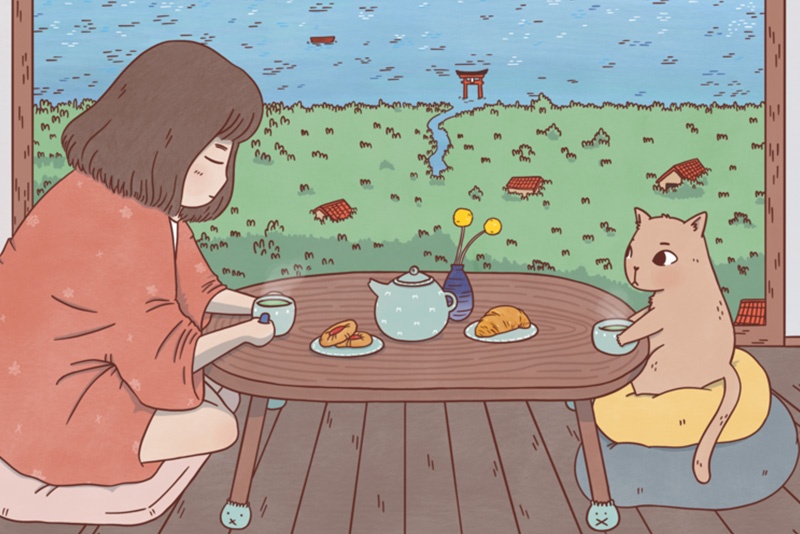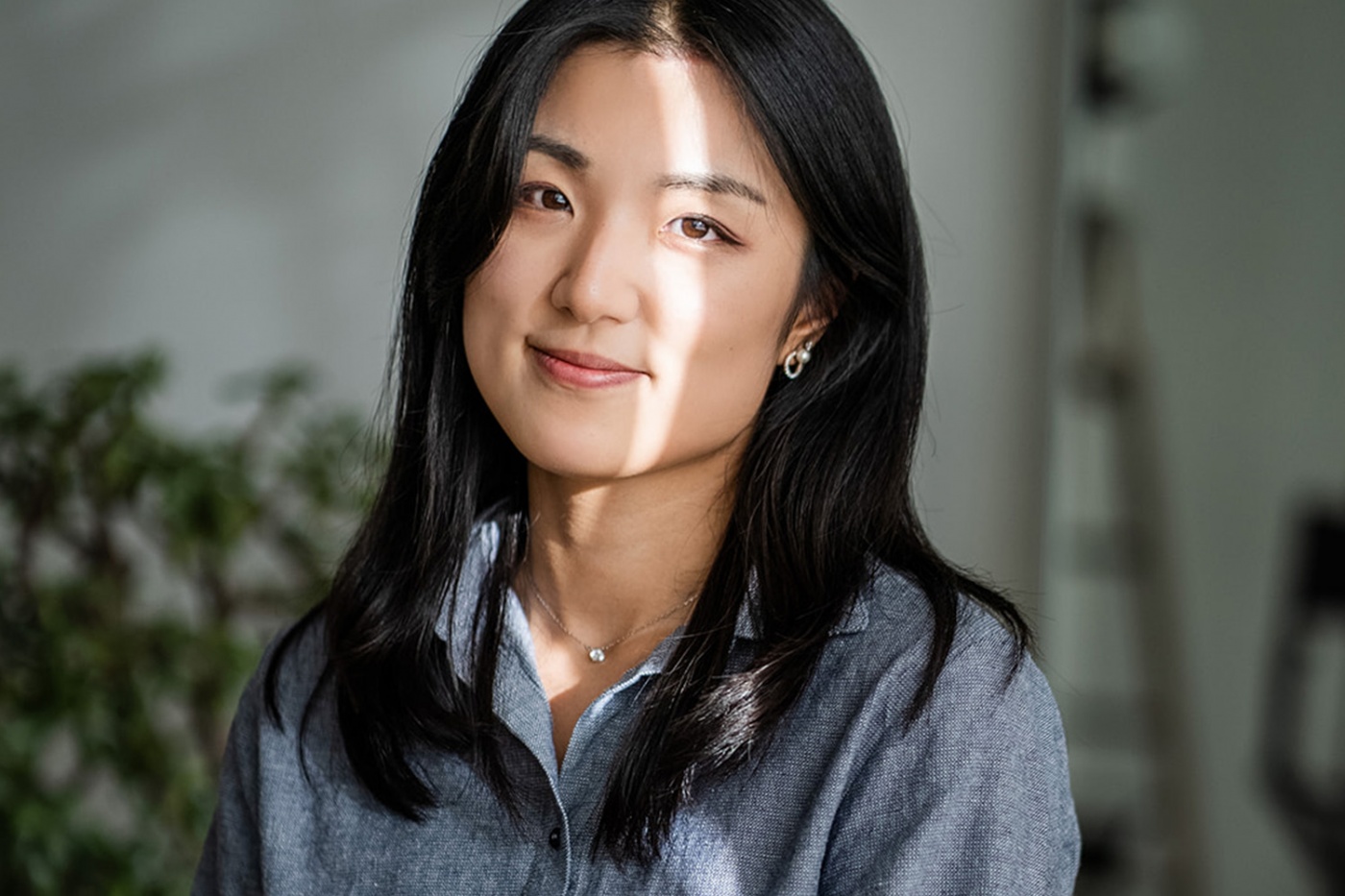The World of Cats According to Author-Illustrator Susie Yi
Author-illustrator Susie Yi is a felinophile, but she isn’t your typical “crazy cat lady” stereotype. A few years ago, Yi rescued two adorable cats from her local shelter, named them Mickey and Minnie and made them main characters in her Cat & Cat comics. In the world of Cat & Cat or “cativerse,” which Yi aptly labels, these critters are sentient and cerebral beings that offer up a slice of life. Relatable and endearing in their own way, Yi also effortlessly weaves in themes of love, friendship, loss, bullying and mental health.
What started as a mere hobby has turned into a cartooning career for the Harvard graduate, who hit pay dirt when she released two graphic novels this year: The World According to Cats and Cat & Cat Adventures series. Currently working on her third one, we caught up with Yi to talk about her writing process, creating in a pandemic and tackling imposter syndrome.

High Net Worth: What was the inspiration behind the Cat & Cat comic series?
Susie Yi: I’ve always loved drawing, but I had not tried digital art seriously before, so my Cat & Cat comics began as a way for me to unwind from the stresses of corporate life. What inspired me to start posting my drawings online was seeing artists participate in an online challenge called Inktober, which is a drawing challenge where artists from around the world follow a list of 31 daily prompts throughout October, post them online, and participate in a global event. I’d always scribbled on my own, without a real creative community, but seeing the first few days of Inktober (and other challenges like this) on my social media feed of amazing artists sharing their work, made me motivated to participate as well. I never thought of myself as a good artist, but I was less worried about being good and more excited to have fun with the prompts. The joy I felt from creating every day is difficult to describe—I loved every moment of it!
Your comics are described as warm, funny, uplifting and relatable. In what ways do you think readers connect with your comics?
As I’ve continued to make more narrative, longer form comics with stories, I’ve incorporated very human themes into them and tried to create each character into distinct personalities. Originally, the comic started out with two cats and their human, but in the last couple of years, this has expanded into four main cat characters and several recurring side characters. By having these different personalities engage with each other and encounter issues that we as humans might encounter, particularly emotional ones, I hope readers can connect with the comics in a deeper way.
Which character do you most identify with, and why?
I have a character named Minnie, a grey tabby with a blanket bundled around her at all times. She’s based on my real cat, also named Minnie, but her cartoon personality is one I identify the most with. She is introverted, loves to read, and is a huge proponent of mental health. Often, she’ll be the one giving advice and listening intently to the other characters, because she cares about the emotional well-being of those around her. Mental health and emotional wellness are both topics I am passionate about, so I created Minnie based on those real values. That said, I identify with little bits of all of my characters in the series. I think that a little piece of me was used to create each one.

You managed to get your first book published in the midst of a pandemic. Has Covid-19 helped or hindered your work in any way?
Covid-19 has impacted everyone’s work in some way, and for my work as an author-illustrator, it definitely made things very different. Being in lockdown, it was strange adjusting to life without being able to see family and friends except over Zoom. Having that difference in social structure meant that I spent the majority of my time working or playing online.
This allowed me to fully focus on my work, but I also recognise that being able to work remotely is a huge privilege. There was definitely a sense of wanting to be as productive as possible during this time so I didn’t “waste” it, although, in hindsight, I wish I had taken better care in striking a work-life balance. As it was my first time publishing a book, I hadn’t experienced an in-person, full-scale launch event. My first book was published in the United Kingdom (but released worldwide), so I wasn’t able to see my book in stores or visit readers there. My second book was published in the U.S. and released worldwide as well, but even that was during the pandemic, so all of my events were online. Still, one great thing about having online events has been being able to connect with people around the globe who have enjoyed my books! I wouldn’t be able to fly out to every country, so having the convenience of “meeting” people through livestreams and panels has been great.
When you worked on your debut graphic novel “The Quest For Snacks,” you mentioned going through some low moments. How did you circumvent those challenges?
I’ve met many people who don’t realise just how much goes into traditionally publishing a book, let alone a graphic novel. In traditional publishing, there are many stages that a book has to get through. After a book deal has been signed, the editor usually works with the author to edit the script, then the illustrator to work through all the stages of the illustration: the pencils, sketches, line art, colour art and lettering. A graphic novel can take between one to four years, or even more, to create.
Because my book is a part of a series, I was excited to work on “The Quest for Snacks” as quickly as possible without sacrificing quality. As both the author and illustrator of “The Quest for Snacks,” this meant that I was responsible for all of the visual storytelling as well as the written script. I was able to complete the book in half a year, which naturally meant that I had to put a lot of hours and energy into this book. While this was very exciting, it did come with some challenges. I had to make sure that I wasn’t sacrificing my physical and mental health, and to avoid overworking. I created a detailed schedule to follow, adding in buffer days to make sure I could comfortably hit my deadlines.
In your latest mini-series, Squash (the leading character) grapples with bullying and self-doubt. What are some of the other salient themes you touch on?
My online mini-series in my webcomics deal a lot with overcoming anxiety, loving yourself, being comfortable with self-reflection, and loss of loved ones. While my comics started out with just cute four-panel comics about cats doing cat things, I’ve enjoyed shifting more towards imbuing these thematic elements into my work.
In my Cat & Cat Adventure book series, the themes are a little more light-hearted, with friendship, sacrifice, and, of course, adventure and curiosity being the main themes. In my upcoming Book 2 of the series, titled “The Goblet of Infinity,” Squash and Ginny, the two main characters, also learn lessons about not judging based on appearances and helping others. However, in my other works, I am incorporating more personal themes. My upcoming graphic novel titled “Paper Girl” touches on themes of grief and loss, guilt, and grappling with a sense of belonging within the family. I have future books in the pipeline, and I’m excited to explore these themes and more, as well.
You mentioned that reading was what drew you to storytelling and watching animated shows was what led you to explore comics as a combined art form. What were your favourite animations?
As did many artists, I also loved Studio Ghibli films growing up. Not only was the artwork absolutely beautiful, but the storytelling was so soft yet touching. “Kiki’s Delivery Service” by the director Hayao Miyazaki was one of my favourites, and ever since, I’ve really enjoyed both films and stories that follow the four-act plot structure versus the three-act structure. Nowadays, I enjoy Makoto Shinkai’s storytelling, the beautiful animated film titled “Song of the Sea,” and the TV miniseries “Over the Garden Wall.” These animations continue to inspire me to tell various stories today.
As a graduate in molecular & cellular biology from Harvard, you could have enjoyed a very successful and lucrative career in that field. What advice would you give to someone who wants to follow in your footsteps?
The main advice I want to give is to find a balance between allowing yourself to dream and being conscious of the practical things. It is possible to enjoy a successful and lucrative career in creative fields as well, and the image of the “poor starving artist” is a stereotype that often deters potential creatives from joining this industry.
The reality is, being in a creative career is not easy, but it is absolutely possible to thrive. Just like in any industry, you have to be self-motivated, work proactively, and be diligent. Before I worked as an author-illustrator, two years ago, I was in the tech industry. Now, in this creative industry, I am not only making more than I did working in tech, but also so much more fulfilled and excited to wake up to work. In the end, “success” is different for each person, and it’s important to define that for yourself and have that be a practical framework for your creative goals.
Still, things don’t always go according to plan, and I found myself grappling with both imposter syndrome and perfectionism. It can be hard to say when a page is fully “done,” and when it’s your first graphic novel, you want to put 200 per cent into it and make it “perfect.” I had to unlearn a lot of my expectations for perfection and realise that kids and adults both would be focused more on the joyful, fun aspects of the story more than my own perceived inabilities.
Being my own boss has its own unique challenges, but it’s one of the best decisions I’ve made for myself. I make sure that I approach my work with project management and long term planning, so that I can continue to grow and expand my knowledge in this field. I also find it very helpful to check in with myself every few months to make sure that I’m on track with my big picture goals, so that I don’t get too bogged down in pursuing short-term things.
Do you think the Asian American Identity lacks a narrative throughline? And is this something you would like to explore in your work eventually?
In my opinion, Asian American identity cannot be boiled down to a single narrative throughline. While there may be some aspects of commonality between generational experiences, I believe that so many factors, including family dynamics, personal journeys, and socioeconomic status, can impact what makes one consider one’s identity.
What I’d like to explore is telling the stories in the voice that I am qualified to speak on, which is my own. As I’ve considered my own identity as a Korean American woman, I recognise that my viewpoint is not akin to those of every other Korean American woman’s. It’s important that in my work, I showcase that Asian American identity and experience are not homogenous, but fully diverse, and not necessarily even defined by the constructs of being Asian American, because each person’s experience is unique and complex. So when I tell stories, I want to show just one example of an experience, but not one that speaks for those of every other person who might identify with that ethnicity.


